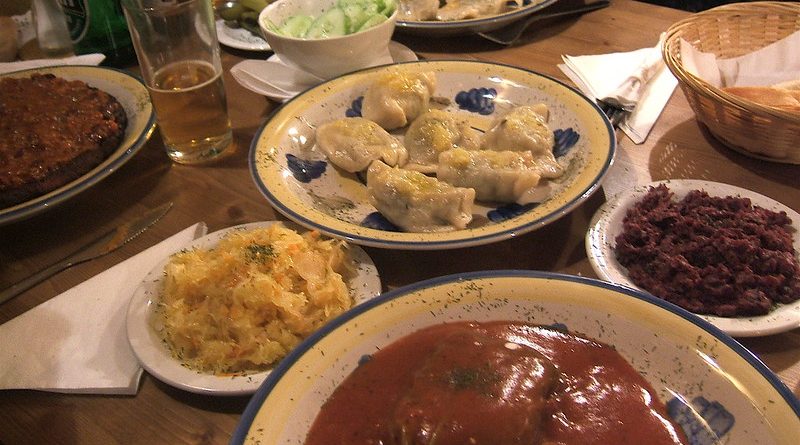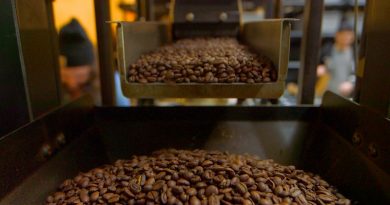Polish Food and Drink Guide
Polish cuisine is a blend of Eastern European – Lithuanian, Belarusian, Ukrainian, Jewish, Hungarian, etc. – and German culinary traditions, with some Russian, Italian, and Turkish influence due to historical influence. In 1518, an Italian princess named Bona Sforza, which literally means ‘nice try’, entered a politically arranged marriage to Poland’s king Sigisimund, no less than 24 years older than she. She brought her cooks and gardeners to the new country, and although Polish cuisine already included many vegetables, Bona Sforza brought so many new ones that the Polish word for vegetables is wloszczyzna, which means ‘things from Italy’.
But apart from the (mainly winter) vegetables, Polish cuisine is like the German – kitchen heavy on the meat, especially chicken and pork. It also uses plenty of cream and egg, potatoes and a special kind of noodles called pierogi. Due to the rather cold weather, dishes tend to be on the heavier and warmer side, a meal is traditionally composed of 3 courses. Starters include soups or herrings prepared in cream, vegetables or cured meats. Main courses are almost always meat dishes including roasts and kotlet schabowy (breaded pork cutlet). Side dishes are boiled potatoes, salads, or a surowka, shredded root vegetables with lemon and sugar or fermented cabbage. Popular desserts are poppy seed pastry cake (makowiec) or drożdżówka, a type of yeast cake.
Other Polish specialities include chłodnik (a chilled beet or fruit soup for hot days), golonka (pork knuckles cooked with vegetables), kołduny (meat dumplings), zrazy (stuffed slices of beef), salceson and flaki (tripe).
Soups
One of the many Polish soups available…
Chłodnik litewski: cold yoghurt-and-beetroot soup served with a cooked egg.
Barszcz biały: sour thick wheat and potato starch soup with marjoram, sometimes with cream.
Żurek: sour rye soup with potato, sausage or an egg, sometimes served in a bread loaf..
Krupnik: barley soup with smattering of vegetables and smoked meat.
Kapuœniak: sour cabbage soup.
Zupa ogórkowa: hot cucumber soup.
Zupa koperkowa: dill soup.
Rosoł z kurczaka: golden chicken consomme with noodles.
Flaki wołowe: pork tripe.
Barszcz czerwony, or Borscht, a hot refreshing beetroot soup, sometimes with dumplings, a hard-boiled egg or beans. It includes red beetroot, onions, garlic, carrots and celery or root parsley. Sometimes bacon is included to give the soup a distinctive smoky taste. The richer versions include meat and cut vegetables, and also sometimes dumplings. Polish barszcz with uszka is a strictly vegetarian version, which is the first course during the Christmas Eve feast, served with delicious ravioli type dumplings called uszka (little ears) with mushroom filling.
Dumplings
Dumplings in general are a very popular dish in Poland and are often served as vegetarian starters ahead of the main meal. The country celebrates its annual dumpling festival in September, and they remain on top of the popularity list for foreigners and locals.
These pierogi as they are called, may be stuffed (singularly or in various combinations) with mashed potatoes, fried onions, quark (sometimes called farmers cheese), cabbage, sauerkraut, meat, mushrooms, spinach, or other ingredients depending on the cook’s personal preferences. The secret to creating the dough is to add some of the potato to the pasta dough. It creates a smooth texture strongly desired by traditionalists. Dessert versions of the dumpling can be stuffed with a fresh fruit filling, such as cherry, strawberry, saskatoon berry, raspberry, blueberry, peach, plum, or apple; stoned prunes are sometimes used as well as jam or sweetened curd. For more flavour, sour cream can be added to the dough mixture, and this also tends to lighten the dough.
Mashed potatoes mixed with farmer’s cheese and fried onions is a popular filling in Poland. These are commonly referred to as ruskie pierogi. Jewish Kreplach are filled with ground meat, mashed potato or another filling, usually boiled and served in chicken soup.
A meat dish…
As established, Polish cuisine is heavy on the meaty side, with anything animal that is edible to be found on the menu. One of the specialities is baranina, lamb, particularly popular in the south and west, or bigos, a seasoned sauerkraut hunter stew with a variety of meats and sausages. Then there is duck, veal, game, liver, beef tongue, pork ribs… some sound more appetizing than the others, but they surely make for good fuel in Poland’s long and cold winters!
Some favourites :
Ozór wołowy: soft steamed beef tongues
Baranina: roasted or grilled lamb – a traditional dish in the south and west of Poland
Bigos: appetizing, seasoned sauerkraut “hunter” stew with various kinds of meats and sausages (see recipe above)
Dziczyzna: wild game
Eskalopki z cielęciny: veal in the blanket
Fasolka po bretonsku: cheap bean and sausage stew
Gołąbki: “little pigeons”: cabbage parcels, stuffed with mushrooms and meat
Gołonka w piwie: pork knuckle, sometimes in beer sauce, often served with horseradish sauce
Kotlet schabowy: breaded pork cutlet
Kłopsiki: meatloaf stuffed with eggs
Kaczka na jabłkach: baked duck in apple
Karp po żydowsku: carp in a green sauce
Kiełbasa: Sausages are very tasty in Poland, they go well with ogórek kiszony (pickled gherkins) in combination with Polish beer, vodka and fresh air.
Krokiet: deep-fried pieces of potatoes, rice or meat stuffed with spinach, cheese etc.
Polędwiczki wołowe: beef tenderloin often with mushroom sauce
Pstrąg: trout, sometimes flambé
Sandacz: perch
Szaszłik: chunks of meat grilled on a spit
Sztuka mięsa w sosie chrzanowym: cooked chunk of beef in horseradish sauce
Wątróbki drobiowe: chicken liver with mushrooms
Zrazy zawijane: rolled fillets of hashed veal in a spicy sauce
Żeberka w miodzie: spare pork ribs in honey
And to drink….
Vodka: a polish invention
Yes, it’s true that vodka was invented in Poland and although no one knows exactly where and when, it is the country’s official national drink and the nucleus of the vodka belt. It dates back to the early Middle Ages and has been enjoyed ever since at almost every celebration and occasion. It’s the backbone of a prominent Polish drinking culture and is practically found everywhere, despite alcohol advertising being banned in the country. Restaurants place settings often include a shot glass. Any Pole will tell you this country produces the best in the world – for many, there is only one way to drink it: cold, straight, and in one gulp. Apparently, the secret lies in the breathing. Inhale, take the shot, and then exhale to release the burning. Na zdrowie!
Starogard Gdanski Distillery
About 1.5 hrs away from Gdansk is Starogard Gdanski Distillery, where Poland’s most popular premium vodka, Sobieski, is produced, along with liqueurs and flavoured vodkas. One of the most distinct flavours is called Herbe de Pologne, a combination of unripe orange, lavender, cloves, balsam, and what they call “bison grass”—the grass that bison eat. The herb vodka combined with apple juice nets a popular drink nicknamed “apple pie” for how the spiciness of the vodka plays off the fruity juice. The distillery opened in the mid-1800s and was named after Polish King Jan Sobieski III. During WWII was used mainly for creating “technical spirits”—biofuel for the German army. After the war, the distillery became a state-owned business. In 1998, it was commercialised and underwent a $20-million renovation that made it one of the most advanced stills in the world. The souvenir of choice at Starogard Gdanski is a life-size, rifle-shaped bottle of Wódka Staropolska, a yellow fruit-flavored liquor, and comes with its own rifle bag!
Mead
Poland is the land of alcoholic beverages… whether they drink to forget their tumultuous past or to celebrate their unknown future, remains to be seen! But in between home-brewn Polish beer, the Danziger Goldwasser and the Sobieski vodka, we find mead, an alocoholic beverage that has just recently come into popularity in the US and the UK.
Mead is created by fermenting honey and water and in comes in various forms with fruits, spices, grains and hops. The alcoholic content of mead can range from a modest 2% to more than 20%. Its main characteristic is the honey, which substitutes its main fermented sugar. Although just recently added to the drink menu by western culture, it can be seen as the ancestor of all fermented rinks. Claude Levi-Strauss noted the invention of mead as the marker of the passage from nature to culture. Mead is also referred to as honey-wine and featured in many myths and folktales, most notably in Beowulf and The Lord of the Rings; it’s been hailed as the drinks of Vikings and Kings.
In Poland, mead has remained a traditional and popular drink since the Middle Ages. Its popularity is certainly based on the absence of wine in the years of the Piast dynasty, as wine wasn’t cultivated at the time. Polish mead is produced by fermentation of lime honey. It was a luxury and expensive drink and hence lost out over time to vodka, which was much cheaper and easier to produce. Mead is called miod pitny in Polish, and it can take between 6 months to 10 years to ferment depending on the kind of mead and the units of water and honey used.




